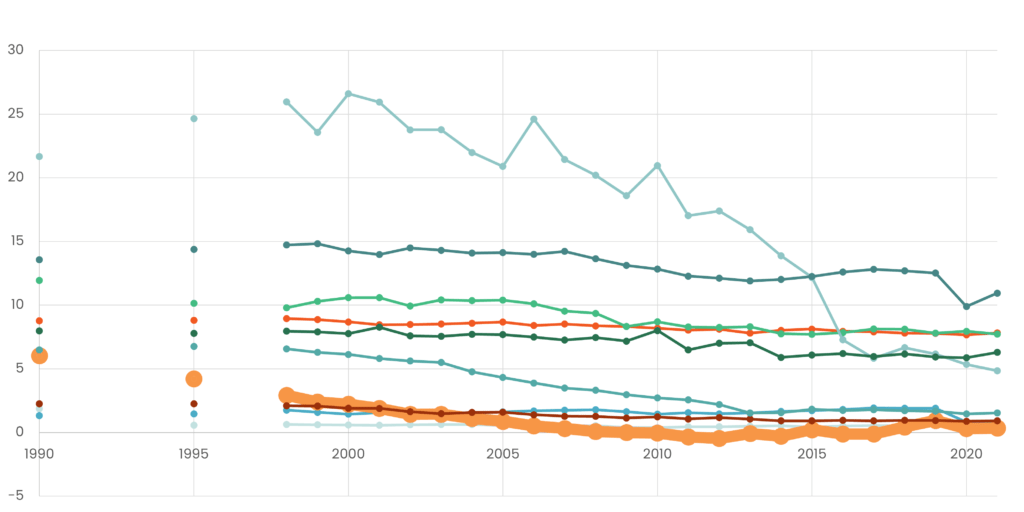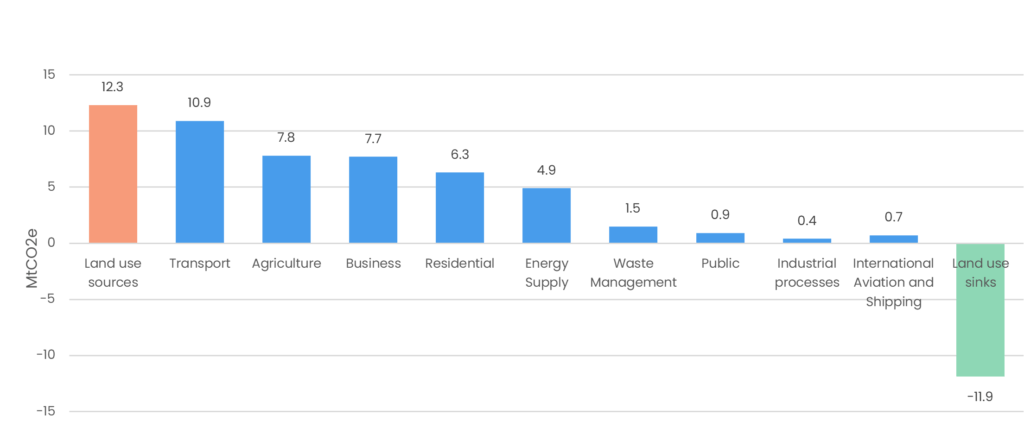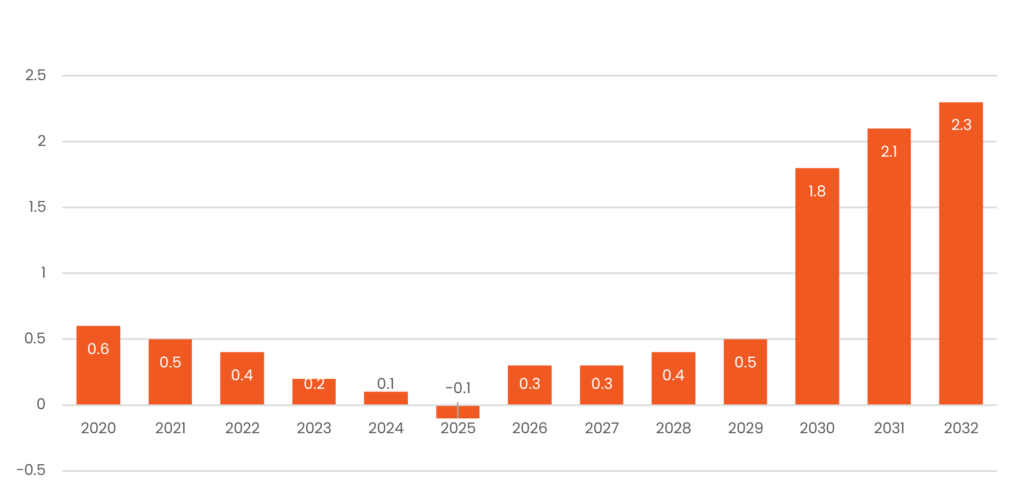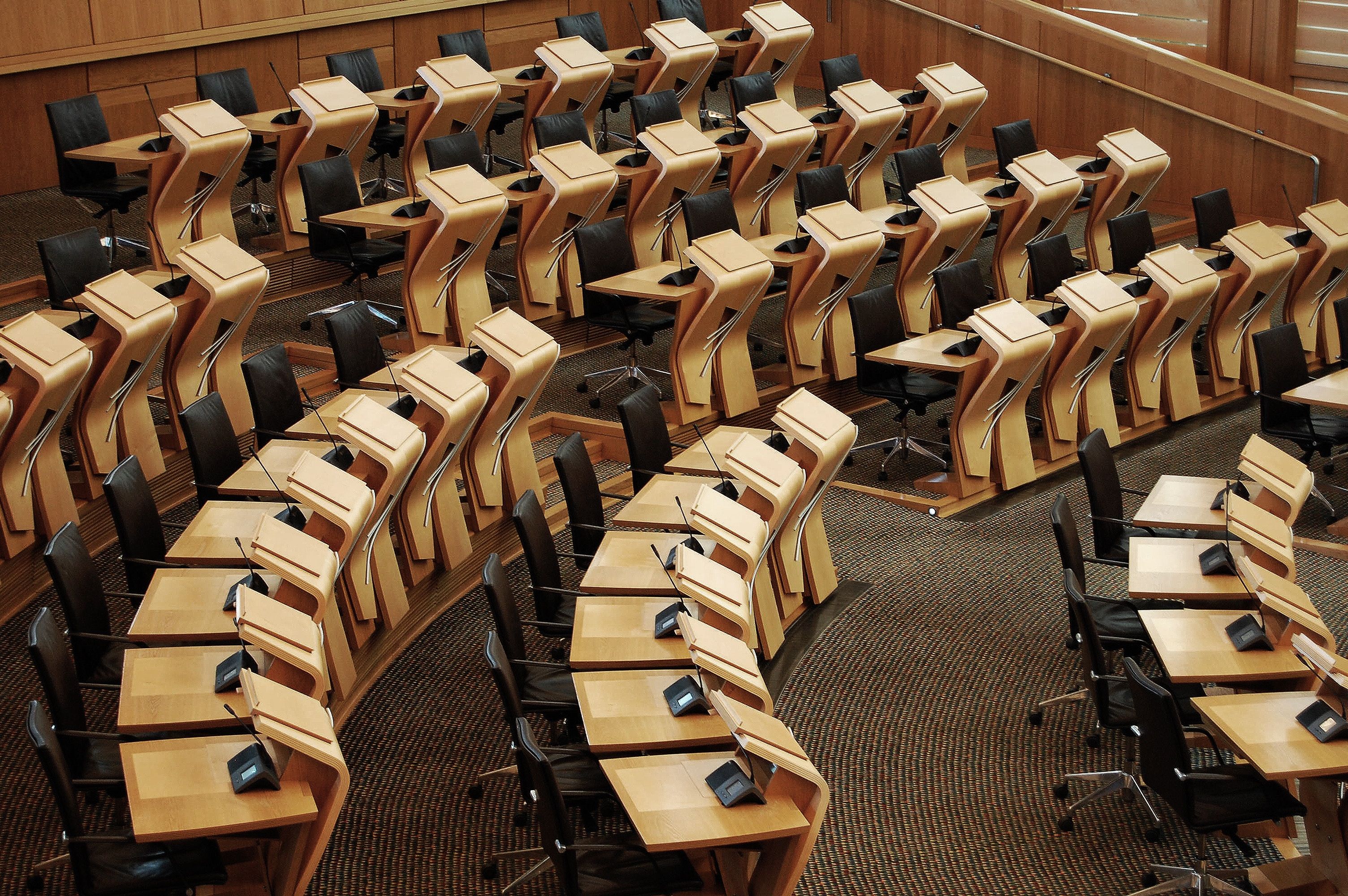Land use, land use change and forestry
Emissions from the land use, land use change and forestry (LULUCF) sector cover emissions and removals of greenhouse gases from changes in the carbon stock in forestland, cropland, grassland, wetlands, settlements and harvested wood products, and of other greenhouse gases from drainage and rewetting of soils, nitrogen mineralisation associated with loss and gain of soil organic matter, and fires.
Read this chapter
Scotland’s territorial emissions 1990-2021

Emissions in MtCO2e from the LULUCF sector 1990-2021, showing a fall of 94% (bold orange line)
Emissions in the LULUCF category are all about what is happening to the land of Scotland. Some of the land of Scotland is absorbing carbon, some of it is releasing it on a grand scale. The net figure of – 0.5MtCO2e or 1.25% of our total 2020 emissions is very deceptive. As the figure below shows the actual emissions from LULUCF in 2020 were 12.4MtCO2e, making it the highest emitting sector, with 20% more emissions than domestic transport. At the same time the land and vegetation of Scotland were also absorbing 11.9 MtCO2e. Most of the emissions are due to changes in land use and damaged peatland, most of the removals are growing trees and healthy peatlands absorbing carbon. The science behind these figures is complex and subject to frequent revision, and some emissions and removals are not included in the figures. Nonetheless, what we do to the land of Scotland – positively and negatively – is vitally important in determining a large fraction of our overall emissions.
Scottish greenhouse gas emissions 2021 with land use sources and sinks presented separately

Climate change emissions and removals by sector, 2021 figures in MtCO2e, courtesy of Andrew Midgley of RSPB Scotland
We have a lot of peaty soil in Scotland and that peat locks up a very large amount of carbon. There is nearly 25 times as much carbon locked up in Scotland’s peaty soils as there is in all the trees and plants in the UK245. When peatlands are in good condition they form new peat and lock in carbon from the atmosphere. But when they are degraded they release carbon back into the atmosphere. Around 80% of Scotland’s peaty soils are degraded in some way, mainly by drainage and overgrazing, but there are also increasing effects from the changing climate. So how we manage peatlands, and particularly how we try to help them recover, is vitally important at a local, national and global scale.
Much of Scotland’s agricultural activity affects the carbon locked up in soils but the impact of that appears in this chapter rather than the Agriculture chapter.
How we use land can also have a big impact on climate risks – reducing or increasing risks from floods, fire, drought, and plant and animal diseases – and plays a key part in Scotland’s overall resilience to the increasing risks that our changing climate is bringing.246
NatureScot – soils, nature and the climate emergency, Clive Mitchell blog, 2022, https://soils.org.uk/blog/naturescot-soils-nature-andthe- climate-emergency/
LULUCF emissions 2020-2032 (MtCO2e)

Expected climate change emissions from LULUCF 2020-2032
The Climate Change Plan update lists four outcomes for the LULUCF sector along with policies and proposed policies which are supposed to deliver them.
Outcome 1: We will introduce a stepped increase in the annual woodland creation rates from 2020-2021 to enhance the contribution that trees make to reducing emissions through sequestering carbon
Outcome 2: Increase the use of sustainably sourced wood fibre to reduce emissions by encouraging the construction industry to increase its use of wood products where appropriate
Outcome 3: To enhance the contribution of peatland to carbon storage, we will support an increase in the annual rate of peatland Restoration
Outcome 4: We will establish pilot Regional Land Use partnerships (RLUPs) over the course of 2021 Emissions are predicted to decline to the middle of the decade but then increase, with emissions from the LULUCF sector representing around 13% of Scotland’s expected total emissions in 2032.

